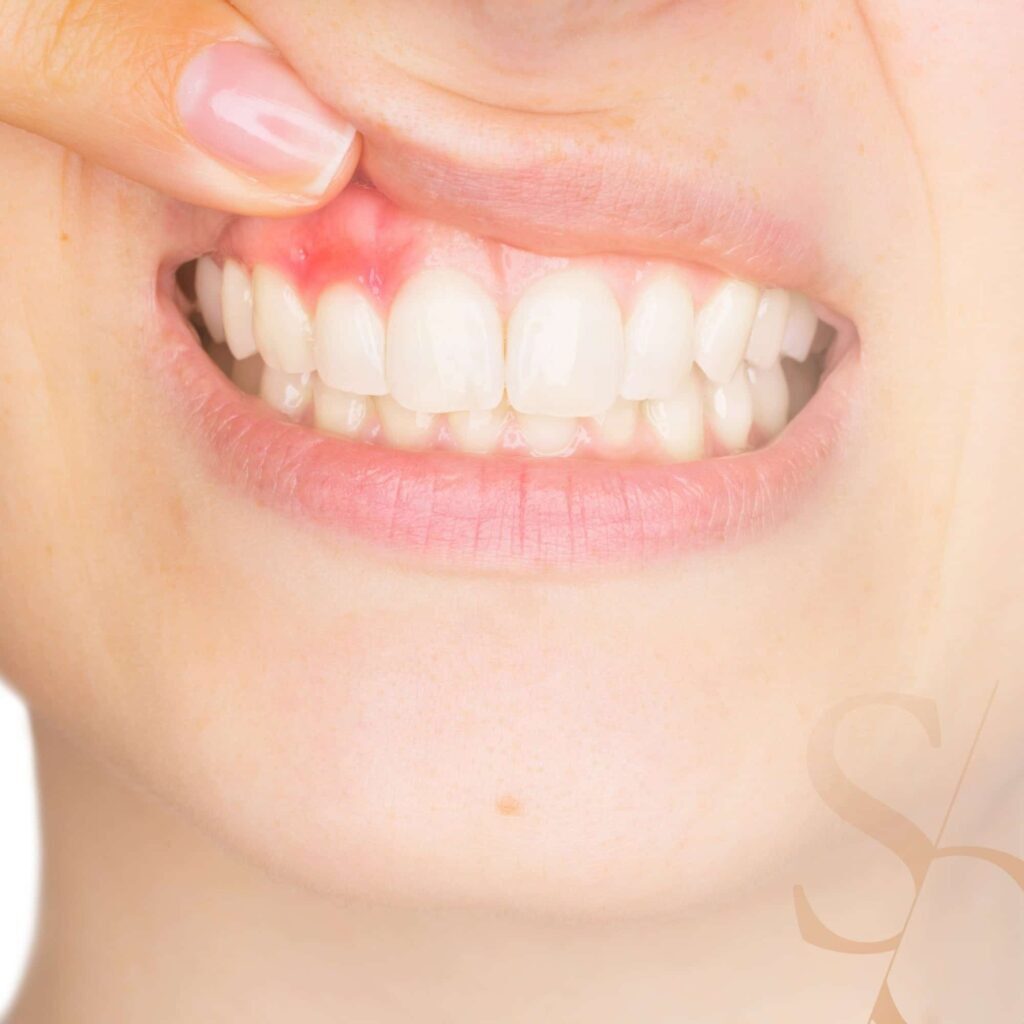Periodontitis is a bacterial disease and inflammation of the tissue around the tooth. This periodontium destroys the attachment fibers that support the tooth and the bone.
What is periodontitis?
This slow disease, which evolves over the years, leads to progressive loosening and loss of teeth without intervention. The disease can be caused by poor hygiene, but it is often mainly due to a weakened immune system. Periodontitis begins with an inflammation of the gums, called gingivitis, and gradually spreads to bone tissue. Infected pockets form between the gums and teeth, causing pain. These are reinforced when the periodontitis is aggressive and very localized, unlike chronic periodontitis which evolves more slowly.

The causes of periodontitis can also be related to age, hormonal changes, especially in pregnant or postmenopausal women, and immunosuppressive diseases such as diabetes and HIV. There are also cases of incorrect crowns leading to tartar buildup.
Finally, habits such as smoking, drinking alcohol, and eating unhealthy foods can also increase the presence of oral bacteria.
Symptoms of periodontitis

The first symptom of periodontitis is gingivitis, which leads to gingivitis and bleeding gums. This is the first sign to warn the patient. Pockets form between the gums and the root surfaces, the attachment between the teeth and the gums is gradually destroyed, and the gum bone is destroyed. Edema is also observed, hampering chewing and causing potential pain with or without abscess. If you have gum abscesses, swelling, or painful pus leakage, an X-ray is needed to prevent the infection from spreading further into your teeth. Bad breath is also one of the symptoms of periodontal disease.
However, periodontal disease is not always painful and can be difficult to recognize. Finally, the ultimate symptom is loose, loose teeth.
The disease can be localized, affecting a single tooth or a group of teeth, or conversely, spread throughout the mouth.
Treatment of periodontitis
Periodontal disease is a slow disease that develops over years and requires effective and constant professional care.
As for prevention, several measures can be taken to ensure good oral hygiene. It is important to brush your teeth 2 to 3 times a day with a soft toothbrush or an electric toothbrush that automates brushing. By brushing your teeth between your teeth, you prevent the formation of tartar. Dental floss, brushes and pulse jets are recommended for this. After consultation, a periodontal disease treatment plan is recommended. A clinical examination is performed to assess the condition of the gums and the degree of inflammation. After this step, the next step is to remove scale deposits using ultrasound or manual instruments. Scaling is followed by polishing which consists of a surface treatment and a direct treatment of the root.
If the periodontitis is too advanced and the patient’s teeth deteriorate rapidly, dental implant surgery should be considered. Feel free to click below to see an example of treatment for a patient with periodontitis.
If you have any questions or would like a quote, please do not hesitate to contact us!
